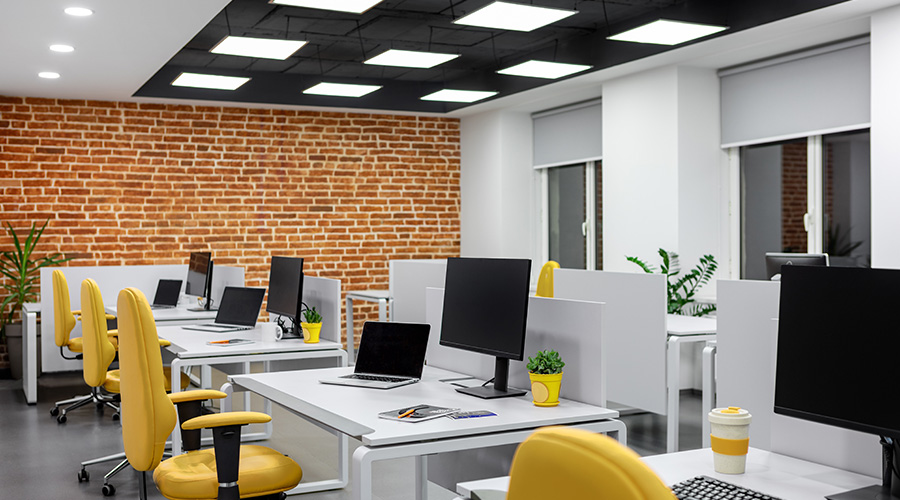Factors that Impact Office Funiture Design
Deciding what office furniture and systems will work best for occupants means examining the designs, materials and quality that will work for the next 10 to 15 years. That’s the length of time over which most furniture pieces remain in use, says Jim Cahill, vice president of systems, storage and education with HON Company. Both initial and life-cycle costs are of concern, of course. Increasingly, so is the products’ impact on the environment.
Moreover, the office environment, including the furniture, can have a dramatic impact on employee morale and performance. But employers and employees often view workspaces differently. Employees usually want to create a sense of privacy, even if their workstations or cubicles don’t really allow it. Employees also want their workspaces to feel spacious, even as executives are cutting the space allocated to each worker, says Mona Hoffman, vice president of marketing with Kimball Office. Employees often want to individualize their space, while most business owners want some degree of standardization to build a corporate image and streamline the furniture-purchasing process.
Determining which furniture system will come closest to meeting these goals is a tall order. A first step is to take a holistic view of the work environment, rather than immediately zero in on furniture elements, says Jonathan Webb, vice president of business markets with KI. You may discover, for instance, that employees spend little time at their desks and more in collaborative work. That’s probably a signal to provide more meeting areas, and decrease the size of individual spaces.
You also want to consider flexibility, which is achieved when there is “intelligence behind the design process,” says Jan Johnson, vice president of market development with Allsteel. That is, the furniture should be able to serve more than one function. Otherwise, if the specific function or technology for which it was built goes away, the furniture has little use. That’s the case now with some desks designed with split tops, so that one could be used for computer keyboards. As more workers have moved to flat screen monitors, they’re placing keyboards on their desks, and no longer using the pull-out trays.
At the same time, consider the company’s culture and growth, including the level of “churn” or employee moves and other changes, says John Lubbinge, director of product marketing for systems with Herman Miller. Those moves and changes often mean reconfiguring voice and data systems, which cause most of the downtime. Organizations that frequently move employees may want to consider frame-and-tile workspace systems, rather than panels, to create employee spaces. That’s because it’s usually easier to lay the cable into a frame-and-tile system, rather than feed it through the base of a panel, Lubbinge says.
As part of evaluating a furniture system’s flexibility, review just how complicated it is to assemble and disassemble the pieces when an employee moves. The more complicated it gets, the more money and time required to make changes.
Similarly, check the degree of interconnectedness between employees’ systems, says Brad Lynch, business unit leader for technical environments with Wright Line. Ideally, moving one person should not greatly disrupt others’ workspaces.
While employees often want to put their own touches on their workspaces, employers often frown on them making lasting changes. Options exist for offering employees inexpensive, temporary ways to personalize their spaces, says Cahill of HON Company. Slatwalls, for instance, give employees a way to hang personal items without permanently marking the walls. “It gives you personalization, but it’s done with inexpensive parts,” Cahill adds.
Related Topics:














